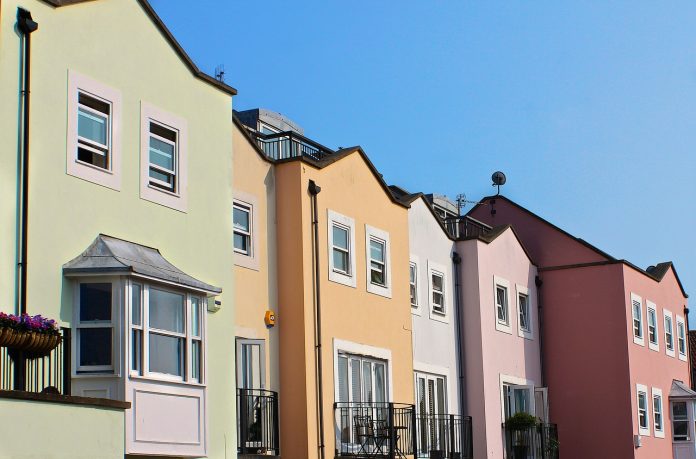According to figures from local councils across the country, over 216,000 homes in the UK have been left empty for six months or more, constituting a nationwide crisis of vacant properties. Despite this, much of the press’ coverage of the issue revolves around London’s struggles. In fact, one fifth of England’s empty homes are located in the North West, and the situation is particularly bleak here in Manchester.
Currently, there are over 11,000 properties in Greater Manchester that have been empty for more than six months. This means that one in every 100 properties in the Greater Manchester area is vacant, a higher rate than the national average. Despite the lack of focus from national newspapers, this is a desperate situation that needs more attention from the media and the authorities alike.
How Manchester’s properties emptied out
One reason for Manchester’s abundance of empty properties is the number of rich investors leaving them empty after buying them, in a phenomenon that has been dubbed ‘buy-to-leave’. Fueled by the city’s urban regeneration and London’s ever spiralling property prices, Manchester is now considered by many to be “the UK’s top-performing investment location”. This has led to an influx of foreign investors. According to an investigation by The Times, foreign residents or overseas companies bought 93% of flats in one of the largest Manchester housing developments. Many buyers have no intention of ever living in these properties, and simply leave them empty whilst they accrue value.
Another reason behind the prevalence of vacant properties in Manchester is the substandard housing quality in certain regions, leading to low demand in these areas. According to HYPERLINK “https://www.manchestereveningnews.co.uk/news/property/eleven-thousand-homes-greater-manchester-12945422″Helen Williams, director of national campaigning charity Empty Homes, neighbourhoods with concentrations of empty homes are “often linked to poor standard housing in parts of the private rented sector and found where residents tend to be on low incomes.” These houses are undesirable, or at worst inhabitable, further exacerbating the vacant property problem Manchester faces. Vacancy can also be caused a whole host of other factors, such as renovation works on a property, gaps between tenancies and inheritance issues, like if a deceased person didn’t leave a will.
The problem with empty property
According to statistics released in mid 2017, there are 4,428 homeless people in Manchester, a worrying 24% rise from the same time in 2016. The fact that many of the 11,000 empty properties in the city could be used to home the homeless has unsurprisingly caused an uproar.
The situation has also led to backlash because of the lack of affordable housing in Manchester. Home ownership in Greater Manchester fell from 73% in 2003 to 58% in 2016, yet the city has seemingly done very little to help people get on the property ladder. Manchester council recently came under fire for contravening their own rules on building affordable housing; none of the roughly 15,000 homes in large developments granted planning permission by the council’s planning committee in the last two years will be “affordable”. With the dearth of affordable housing in the city, many have questioned why the 11,000 empty properties couldn’t be used instead.
Vacant properties are also substantially more vulnerable to crime than occupied buildings, and are particularly at risk of crimes like theft, vandalism, squatting and fly tipping. As property protection company Oaksure point out in their page on empty property security: “Even leaving a property vacant for 24hrs carries a significant risk. Squatters and metal thieves can take what they want from a building within that time.” Long term vacant properties are therefore in huge danger of being targeted and causing crime rates to rise.
Manchester homes for Manchester people
Fortunately, there are steps being taken to remedy this situation. One way is through housing developers offering properties to locals ahead of foreign investors in an attempt to curb the buy-to-leave phenomenon. For example, developers Capital & Centric meet with prospective buyers and carry out informal interviews to ascertain whether they are serious about living in the property or not, in a scheme that has been labelled ‘Manchester homes for Manchester people’.
Work is also underway to refurbish some of the dilapidated properties in the city. Contractor Wates Living Space began a comprehensive refurbishment programme earlier this year on empty properties on Ben Street in Clayton and the National Cycling Centre that had been purchased by Manchester City Council. Work will include: re-roofing, energy efficiency upgrades, new kitchens, and replacing windows and doors.
There are also national schemes either in place or in the pipeline aimed at easing this crisis. It was recently announced that MP’s will debate legislation that will allow councils to charge double the rate of Council Tax on homes left empty for two years or more. An initiative already in place is the New Homes Bonus, a government-provided fund set aside for landlords so that they can refurbish their properties themselves.
Despite the coverage of London’s troubles with vacant property, it is evident that the rest of the country is in a similarly grim situation, especially here in Manchester. Although there is encouraging action being taken to reduce the unacceptably high number of vacant properties in the city, it is clear that plenty more needs to be done.







